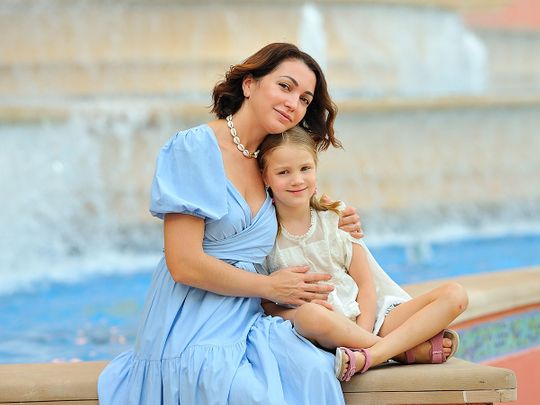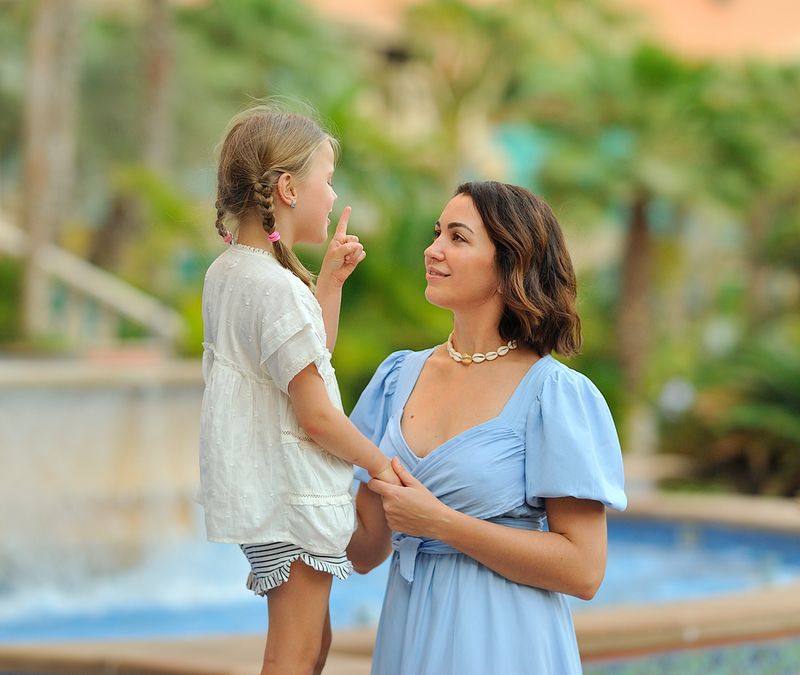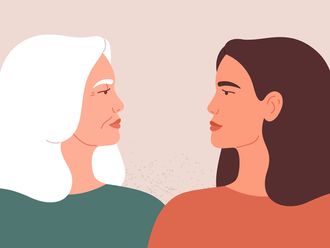
“Tamara did not smile,” Russian expat in Dubai Evgeniia Spitsyna says. “When the nurse brought her into the room, she looked exactly like Thumbelina in her faded calico dress. She had a cold hard stare and a shaking lower lip.
“After half-an-hour of play I noticed sparkles in Tamara’s eyes, then she got tired and lay in my arms,” she tells Gulf News about her first meeting with her adopted daughter in a Russian Baby Home.
The meeting was a long time coming. Adoption had always been at the back of Spitsyna’s mind. “I recall as a kid staring at a TV screen in despair. I could see crowds of strangers running and trying to get somewhere. Their faces were the faces I would never forget. From a news anchor I learned that lots of people lost their homes because of war. Some of them lost families,” she says.
As she saw tears rolling down kids’ faces, being swallowed by their clothes or brushed away from flushed red cheeks, she turned to her mother, begging her to help at least one child get a new home. “I turned to my mum and begged her to adopt somebody. Being raised a happy child in a loving family I could not believe these people would survive without theirs. Little did I know about strength of spirit,” she says.
“But what I was always sure about was that people should never be left alone and should never be abandoned. This belief became a part of my philosophy …. There is nothing more important for a baby than to understand that he or she is safe, that they are the centre of somebody’s world and that they will be always taken care of,” she says.
As the years went by, Spitsyna helped strangers in any way she could, via charity projects and voluntary work. “It was never enough. I knew what I needed to do and it felt so right if unconventional at the same time,” she says.
After she got married and had a biological baby, she and her husband – who was also interested in adoption – decided to give an orphaned child a home. They were still in Moscow at this time. “When she was a baby I had enough time to read tonnes of psychology books on child development. I was curious and eager to create a supportive environment that would be beneficial for her. She was growing to be a very smart and kind girl. When I was kissing my baby good night, I could not stand a thought that outside my cosy world there were kids who never got the chance to experience the same. We [my husband and I] always wanted a big family and it did not matter if we had biological kids or adopted them. I swapped my psychology books with ones on foster care and adoption legislation in Russia.
“Before we started our search, we had to decide on what we can offer to the child. We were financially stable and lived in Moscow back then, a big city with a variety of schools and affordable health care. It meant that we could take care of a child with some health issues,” she says.
The process
Spitsyna calls the adoption process ‘simple if time-consuming’. “There are several forms of placement of children left without parental care - foster families, adoption, establishment of guardianship. Depending on your circumstances, you could choose any one. The adoption process I would break into three steps:
- Legalising yourself as an adoption candidate or foster parent. This includes proving financial and medical fitness, the lack of a criminal record and attending school for foster parents, which gives you a good perspective on what are you are going to deal with after adoption.
- Child search. Every orphan in Russia has a unique profile in the database, which is available online.
- Registration of adoption in court.
“From the first application to Tamara’s first day in the family it took us around nine months. What a coincidence,” she smiles. (Tamara went home to her family when she was one year and nine months old. In Russia, children under nine months cannot be adopted.)
Homework
Preparing a child for a new sibling requires tact. In the case of the Spitsynas, a family psychologist suggested a short timeline between introducing the idea of an addition and making it happen. “We consulted the family psychologist and she said in our case, it’s better not to say something beforehand. We talked to our daughter a couple of days before Tamara’s arrival home – maybe five days before. The elder one was three, she could not understand a lot. We told her that she’s going to have a younger sister, then the sister is going to come from an orphanage – this is another way how kids become part of the family,” she explains.
To keep rivalry at bay, they chose a younger child, says Spitsyna. “That was what all the psychologists advised,” she says. There is some tussle for attention now too, years on, admits Spitsyna but calls the little spats ‘quite normal’. “I remember myself as a kid, I had the same rivalry with my brother,” she says.
More than sibling fights, what occupies Spitsyna is wanting her daughters to lead healthy, happy lives. “After Tamara’s medical check-up we learned that some health issues were more serious than had been suggested. But we were well prepared in terms of knowledge and we could reach professionals on any matter.
“Once the first period of adaptation ended we became not a family with an adopted kid but more a family with a child who had health issues or challenges. She actually has a Sanad Smart Card, that is a disability card, in Dubai – she has big challenges with her health, both mental and physical, and we are now struggling, we are trying to help her gain confidence so she can develop more or less normally,” she says.

She adds that the family’s move to Dubai about two years ago has helped. “Tamara, who is seven now, turned out to possess a great personality; she is the kindest child I have ever met, very affectionate, curious, always willing to help. We still spend a lot of time and funds trying to improve her health, so that she is able to attend regular school and get a profession in the future. And she surely has made some progress. She feels secure and loved in Dubai and it helps her stay empowered.”
Adoption is not for everyone
It’s been a tough but gratifying journey for Spitsyna, being able to provide a home for a child. But she’ll be the first to warn others that it isn’t a decision people should take lightly. “If they are ready for adoption, why not? But I would recommend that they first sort out their reasons for wanting to adopt,” she says. “I would recommend everyone who is thinking about adoption to take therapy sessions to sort out your strengths and weaknesses and dive into the foster community to get to know the details. You will need to create an environment where a child will be able to share his pain and feelings. And this is the toughest part because it will be peeling off slowly, layer by layer. I highly recommend reading a publication of Harvard scientists called ‘The Science of Neglect’ and any material on attachment theory, I vote for [Canadian psychologist] Gordon Neufeld’s books.”
“I took a long pause before giving my consent for this interview because the adoption happened five years ago and has become history,” says Spitsyna. “Tamara is seven now and she knows about the adoption but we never force this topic at home. Her being my daughter feels absolutely natural.”
Gone are the days of smile-less meets and stressed out behaviour, Tamara is home.
Share your parenting journey with us by writing in to parenting@gulfnews.com








